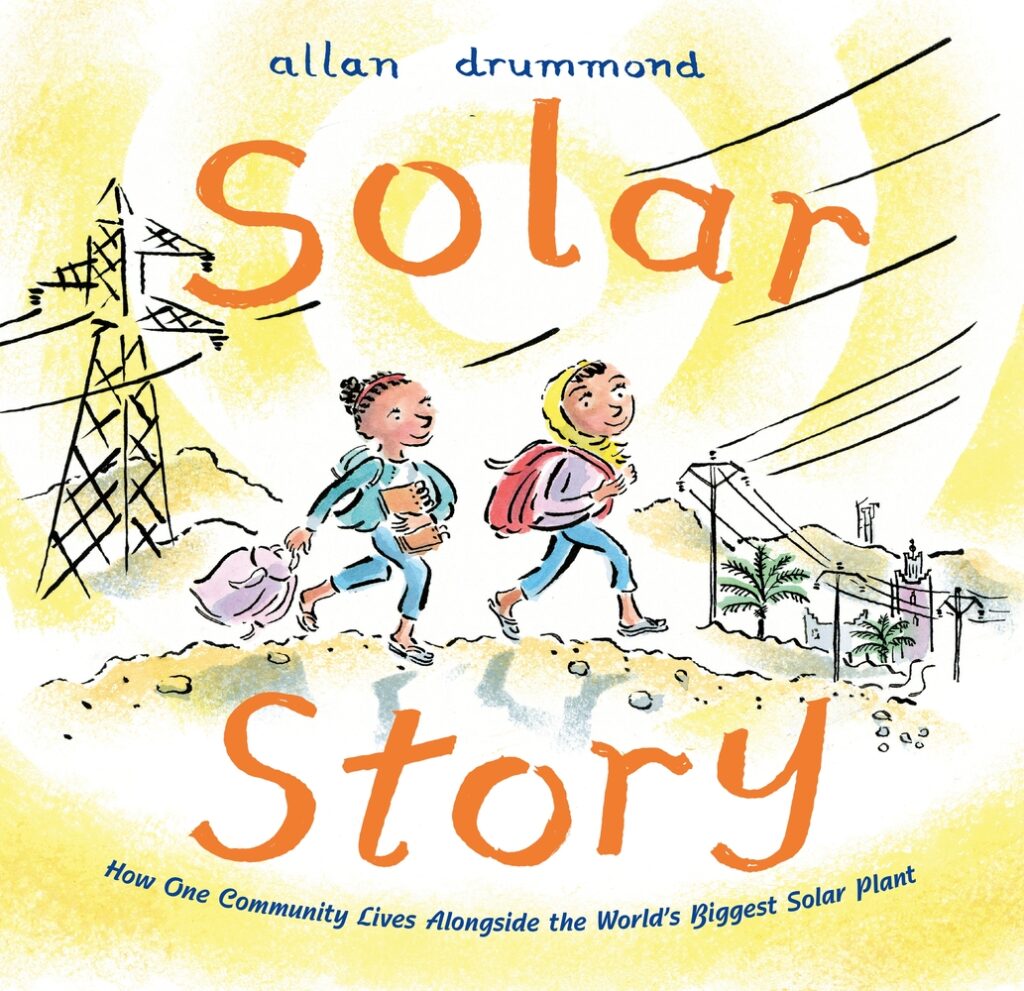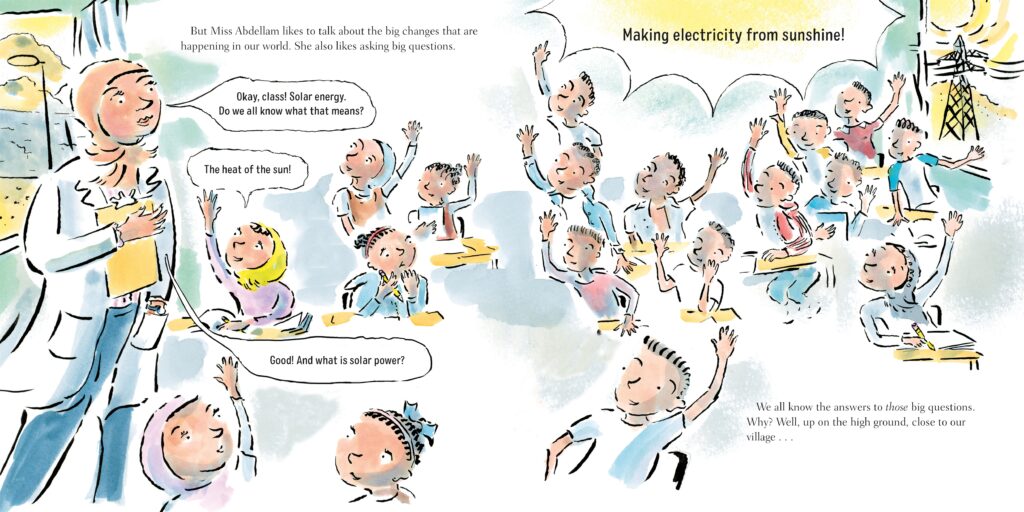Author/illustrator Allan Drummond has a way with children’s books. They’re geared for those young children aged 4-8, but they aren’t babyish. Our 10-year old reader was looking over my shoulder as I was reading Solar Story. He said, “I like the art-and it’s a book about solar power, cool”. As he left the room he commented that he should read that sometime. His eight-year old brother squealed when Solar Story arrived in the mail. Mind you, he wasn’t expecting the book; it’s just that the book has that vibe that makes children want to open and read it.

Adults will have the same vive when they see one of Drumond’s eco-books. They don’t have an official name, but Solar Story is the fourth one in these very engaging picture books that balance entertainment and education like very few books do. Energy Island, Green City and Pedal Power are the first three and are the rare children’s books that will remain in your forever library long after your children stop reading them.

For now, let’s go back to my oldest son’s observations about the universal appeal of Drummond’s artwork and presentation. He presents his character is such a way that they’re obviously geared to children, but has the subject matter in a very mature, grown-up way that children will appreciate.
Eight-year olds are on the top of the book’s interest level and should be able to read the book. They’ll also be savvy enough to know how cool the subject matter in the book really is. In Solar Story, How One Community Lives Alongside the World’s Biggest Solar Plant, we meet Jasmine and Nadia. They’re our two unofficial guides as they walk to school and take a field trip to The Noor Solar Plant.
The girls have a small flashback to when this small desert town in Morocco was building the facility. It’s a massive place with 660,000 mirrors and covers more than 3,500 soccer fields. This is not the solar power plant that you might have been thinking about. It functions differently, requires hundreds of workers on a daily basis and might have more in common with a sunflower than the image that you’ve got in your head.

Unless you have a degree in sustainable energy, Solar Story manages to teach anyone who reads the book something. I learned more than a couple points and I’m sure that our eight-year old learned dozens of facts that he’s not able to process yet. For him, it was more about enjoying the art, being able to read the book on his own and feeling like a big kid.
One aspect of this certainly comes from the fact that there are two pages near the end of the book with real photos from the facility. There are also three paragraphs of notes from the author about what he learned during his research into the process. There are additional resources for those older readers that want to learn more about it.
What we enjoy about Solar Story, in addition to his others, is that the author manages to weave a coherent story that children will want to read. Sure, they’re reading about non-fiction elements, but there’s a narrator of sorts to guide them along through this illustrated book for children. It’s a children’s book that they’ll want to read and will also share nuggets of knowledge for older readers. Parents will also appreciate that the book is not preachy. When you think about it, the potential power that solar energy can bring forth is amazing and this books presents it in that manner and not in a way that’ s education and not preachy.
There are affiliate links in this post, because, solar power.





 Facebook
Facebook Twitter
Twitter Flickr
Flickr GooglePlus
GooglePlus Youtube
Youtube